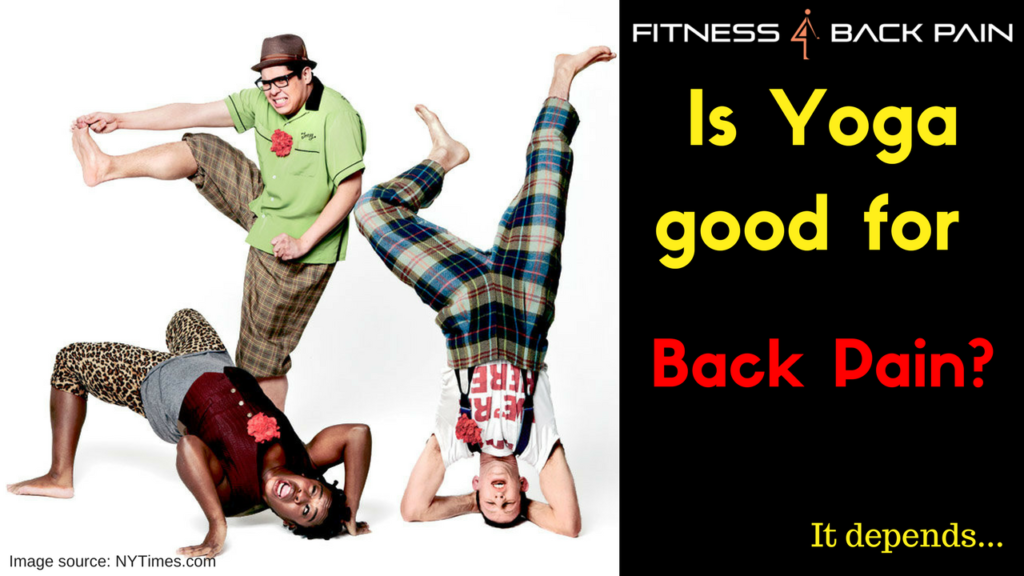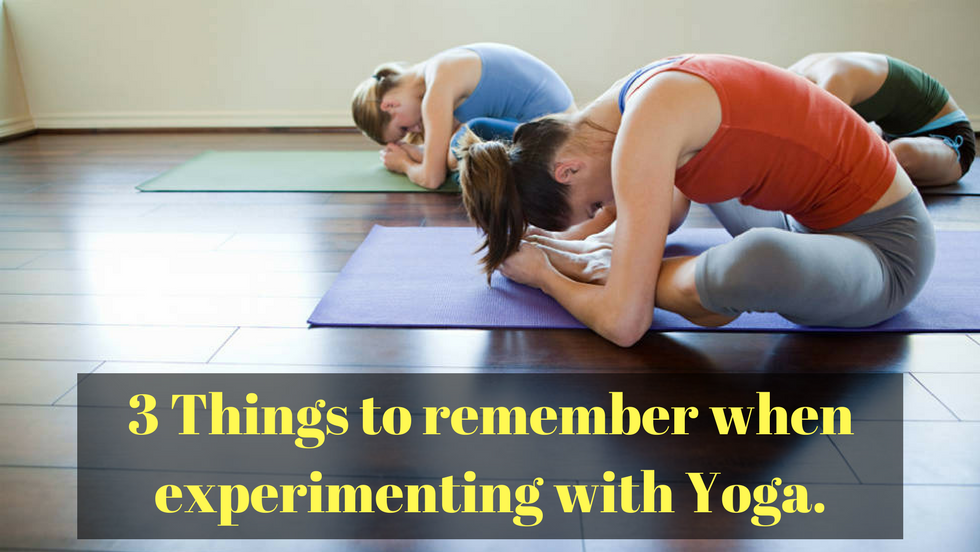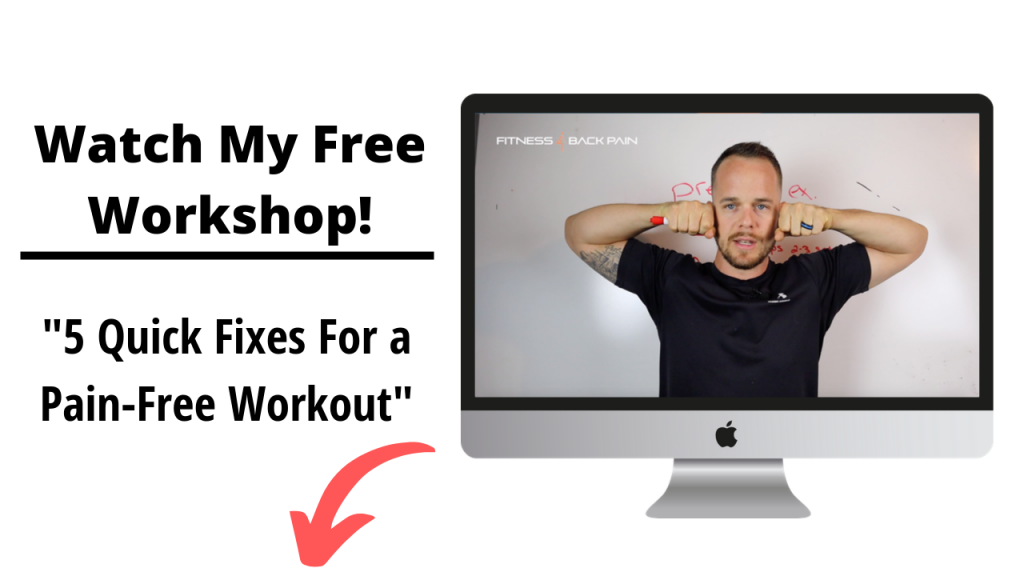
Yoga and stretching in general, is one of my favorite topics to teach and talk about with a new client. Most of the time you hear a lot of “I get it, that makes total sense!” or ‘Oh, wow I have been doing it all wrong”. These are those Aha moments I love to bring out in people. I know a number of people who have had Yoga literally change their life for the better and others where they feel Yoga has “let them down” when it comes to healing their own chronic pain. Today, I want to shed light on a popular article that has been floating around and give you some practical advice they don’t talk about when attempting to get into Yoga from a back pain sufferers perspective.
Why the sudden hype around targeted stretching?
There is a popular chain of articles all talking about the same thing.
Yoga and Back Pain.
Men’s Health launched theirs just the other day. It’s called The Workout That’s Just as Effective as Physical Therapy For back Pain
In summary, it talks about how a group of people were divided up into three separate groups and given a specific low back treatment program. One group was given flyers and handouts talking about living with chronic pain with a few tips for prevention. The second group was given 15 sessions with a Physical Therapist while the third group was given 12 weeks of exercise specific yoga classes. The results of this study supported the use of yoga (as long as you used their specific stretches) as a better potential alternative to Physical Therapy.
Time Magazine even had their say on this same study. You can check it out here.
A random question that comes to my mind is why did they pick the group that they did? One could argue that the lower income households don’t have access to Yoga classes nor do they know much about any kind of basic body maintenance. I am just curious if this factor has anything to do with the results. I wonder if the success had anything to do with the stress relief of not being able to afford or have access to quality care. Let me know your thoughts in the comments below. Do you believe simply putting yourself in a more positive and success driven environment could change the sensitivity of your pain?
ANYWAYS…lets get back to the show.
At first glance, this sounds great. Movement therapy is taking the lead over conventional means of treating low back pain. After diving into it, nothing that I was reading was anything new. I was honestly afraid they were going to make some blanket statements regarding all yoga is good for back pain. What they did focus on were some key poses that would target a lot of common issues that we do every day that can cause nonspecific lower back pain.
What I wanted to do today is leave you with some key points to chew on if you want to start implementing more Yoga into your routine. Odds are your body could use a little opening up but be very careful as to what tools you use. It could be the exact tool that keeps you running around on your never ending pain cycle.

Is Yoga Good For Back Pain?
The answer to this will ALWAY be…It depends.
So to pick back up where these articles tend to leave off.
“But don’t join any yoga class blindly—researchers and experts specifically chose the poses for this experiment for safety and efficacy. So talk to your doctor first about what kinds to stick with.”
I want to give you 3 tips you can start implementing now if you’re considering yoga as your next move.
1 – Don’t listen to the “Oh yeah that feels great on my lower back, you should definitely do it” person.
These people are dangerous. Typically they don’t have or have never had any kind of lower back pain yet they think they can still offer great advice since the stretch feels good to them. I’m sure these people mean well but as a lower back pain sufferer, you need to take responsibility of what advice you allow yourself to take in. Not all yoga is bad just like not all yoga that is used to treat lower back pain is actually good for lower back pain.
When you’re faced with friends or a popular yoga instructor telling you about “The best stretches or “asanas” for lower back pain are X, Y, and Z. Always take it with a grain of salt. The biggest mistake I made was surrendering my recovery over to the highest ranked youtube or google search under the topic “Yoga workouts for back pain”. I remember finishing those exercises and laying on my back not able to move. I would tell myself “This is the highest ranked yoga video for back pain, it has to be the solution!”
It wasn’t.
So for you always remember, not all yoga is created equal. If someone you trust gives you a list of yoga moves approach them slowly and only do one at a time. Don’t rush through the entire list. Focus on each one, do it right and pay close attention to the way your body feels during and after the exercise. We often mistake the 25-45 minute window of relief after a good stretching session as proof that what we are doing is right. Only to have the pain come back with vengeance shortly after. This is why I say pay close attention to how your body reacts after. If things start to get dicey or your lower back seems to not be agreeing with the move then stop the workout and call it a day. You can take that one off the list and try a new one tomorrow.
I’ll give you some pointers on which type of yoga moves to start with below!
2 – Focus on what you know is tight.
“But everything feels tight!”
To make your own personal self-care as simple as possible, the first place you need to look is what you do every single day. When it comes to what you should “stretch” first, is give a lot of thought to what you do on a daily basis. For example. I spend the first 2-3 hours of my day sitting. I can’t help this it’s just the way it is. For someone with a ruptured disc, this is not the ideal position to be in first thing in the am. Because of this work life that I have I focus my efforts on what I spend hours a day shortening. In this case, it’s my hip flexors and chest. I also work on glutes and hamstrings but the most obvious focus would be the front of the hip since it spends so much time being shortened.
This is how I want you to approach Yoga. If you spend a lot of time sitting behind a desk then doing the positions that help REVERSE this is more thank likely going to be a good fit for you. Exercises like the cobra pose (modify it to fit your pain level) or a modified high lunge could work well for you. What you don’t want to do is go to google and type in “Yoga for tight hip flexors” because this is what you will get.
Don’t get me wrong these really hammer the hip flexors but they are not teaching the LBP suffer what they need to be aware of when doing them. A lot of these involve an overextended lower back wich could cause some already inflamed facet joints to get even more upset. Some of these also include twisting which for someone just starting out should stay clear from until they can maintain global core control and can do it with little to no discomfort.
So when you’re confident in what your lifestyle is doing to your body (as in what is getting tight due to your daily habits) pick 1 or 2 of the exercises you find and introduce them into your program. Always keep in mind this little list.
1- Does this compromise me being able to maintain a healthy spine position to promote healing to the LB?
2-Does this cause short term relief only to have the pain come back later even worse?
3 – Is this a more universal exercise or does it only target the muscles I am looking to lengthen?
4 – Does this put me into a position I already spend a lot of time in? (Example: If you spend a lot of time in flexion, the childs pose would not be a good fit for you while you deal with a flexion intolerant LB.
3 – Think Stability Before Length
A common symptom of low back pain is tight muscles. Common sense tells us to stretch what is tight. This is not always the best route to take. For a while, I spent most of my time stretching the muscles that would cramp or be tight all the time. I was only making things worse.
It wasn’t until I started focusing more on “Global Stability” that I started to see the tides change. This Global Stability is when the muscles that make up your glutes, pelvic floor, sides, and front all work together to create your brace. Once I figured this out I gave up ALL extra stretching (this included everything that I was not 100% confident I needed at the time) and focused primarily on not only building endurance in my core but learning to coordinate the muscle groups to work together.
So if I could give you any advice. Yes, stretching is important and there will come a time in your recovery that you will need to focus more on length but if you have no clue where to start and are afraid of hurting yourself at the gym start with simple neutral spine core movements.
The best place to start is learning how to properly brace the core and breathe. If you can’t do this successfully you are building your house on sandy soil. Check out the video below to get a jump start on doing it right.
The moral of the story is your back pain story is different than everyone else. It doesn’t mean that you have some special rare case that is not treatable, it just means your back is sensitive to different reasons then the guy/gal beside you. This is where you need to learn to stay in your lane and focus on what works and doesn’t work for you. The more you understand your pain triggers and daily habits that are keeping you on this pain cycle the effectiveness of your treatment will skyrocket. Simply because you’re learning to give your body what it needs to heal and get stronger.
Thanks for stopping by!
William
p.s be sure to leave a comment below on your own experience with yoga. Good or bad is welcome!
Oh, and if you know anyone who is dealing with back pain and currently leaning towards or participating in Yoga, share this with them! Thanks!



I had a lower back fusion in addition to other work on the lower spine in Oct 2017 I am really wanting to recover fully but have no idea where to start. The trainers at the gym hold their clip boards in their hands and watch the clock hands turn. I feel so defeated and afraid of ending up worse than pre surgery. I am anxious to read and watch videos on your sight and will pray that you lead me into the right direction. What Ive read so far feels right to me in my gut. Everyone else Ive talked to about a recovery plan have left me feeling sick to my stomach. I wish there was someone in my area that shared the same philosophy and skill and mindset.
Hey Trish,
Don’t be scared! That is the exact mindset that keeps people frozen and in worst situations than before. There is a recovery process to what you’re going through that needs to be respected but NOT feared. I am glad you feel a sense of peace going through my content. The best advice I can give you is apply anything you learn slowly and with precise execution. Go slow and don’t rush. The movement may be a good recovery tool for you but think about tailoring each one to fit your current pain level. Example: Doing a full squat with a ball may be painful so do a quarter squat for a couple weeks and work up to a deeper squat. Take this approach with everything.
You need to approach your recovery from the ground up. Starting with the simple day habits and working up from there into exercise based recovery. Feel free to read through my site or you can check out my course I designed that covers all of these fundamental beginning stages which will take up the next few months to work through and implement into your daily life. Bottom line you need to start safe and progress slowly. If you’re not comfortable doing it on your own I would suggest investing in good coaching or literature that you trust.
William
In this video do we have the pelvic floor engaged as we brace, and do the breathing?
Thanks!
Abdominal Bracing and Breathing
Yes, The goal is to learn to marry all of these things together to create a more “global” stability. You can practice exhaling and contracting or bringing up the pelvic floor then as you inhale you can relax. Progression and/or what you want to work up to being able to do is keep the pelvic floor engaged the entire time.